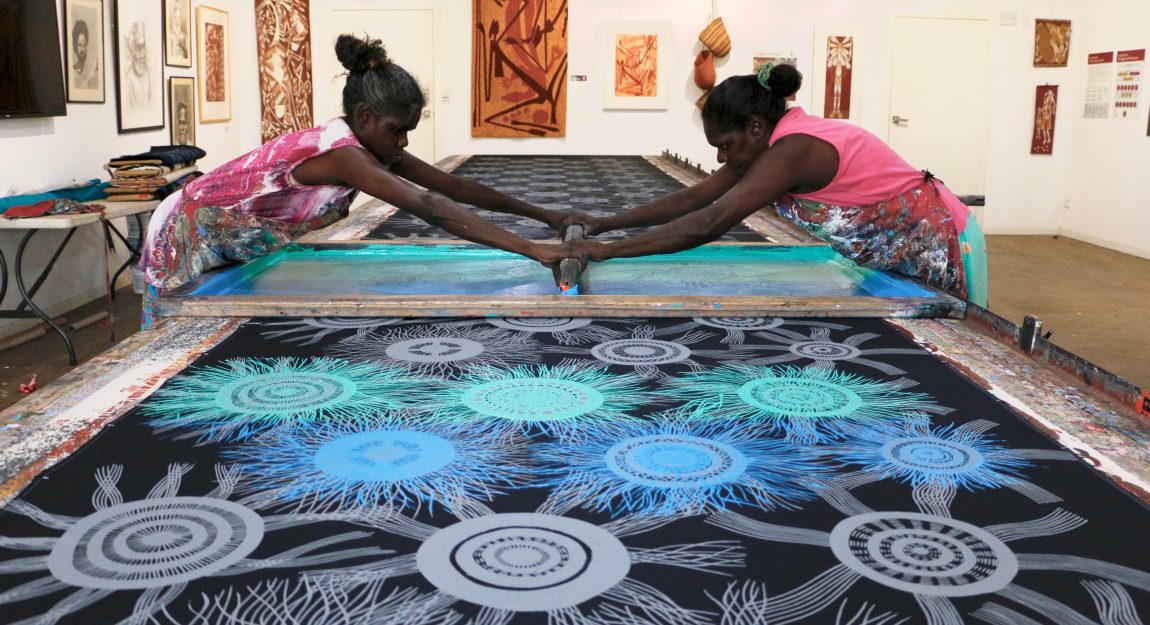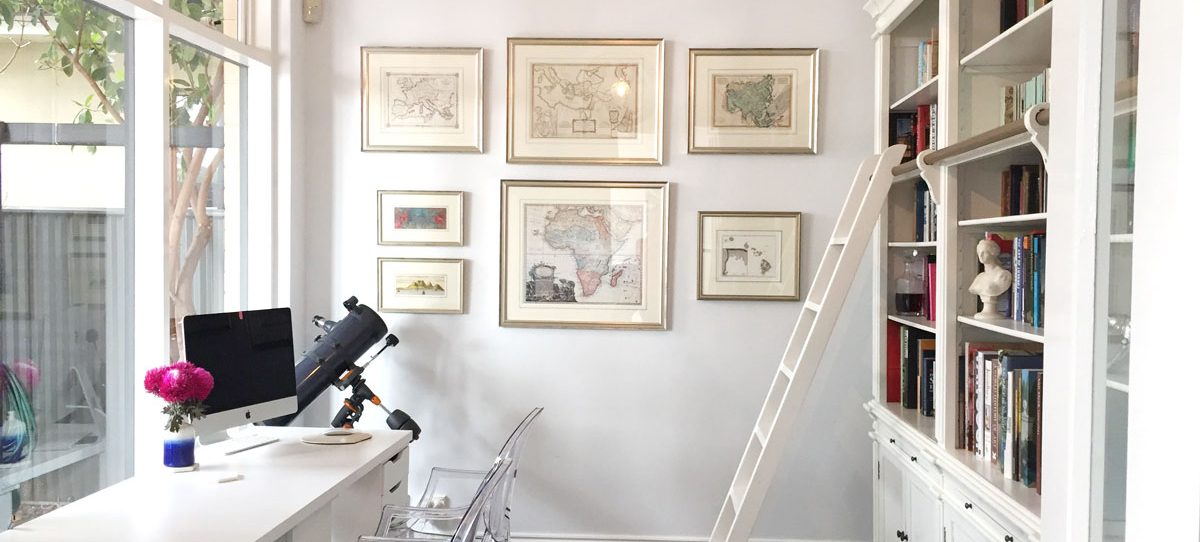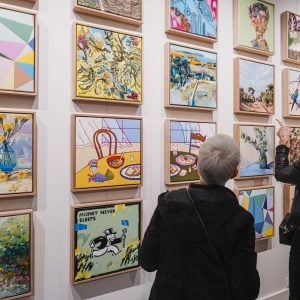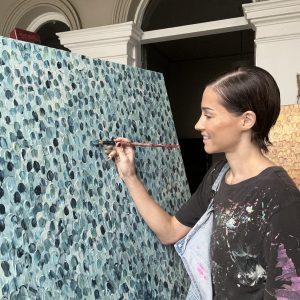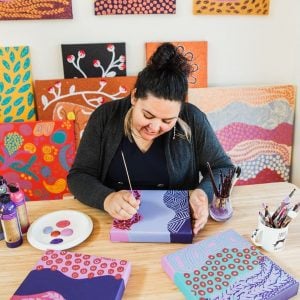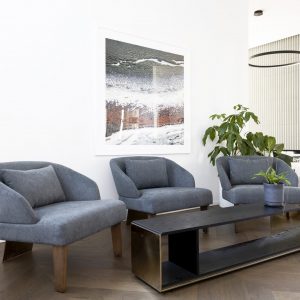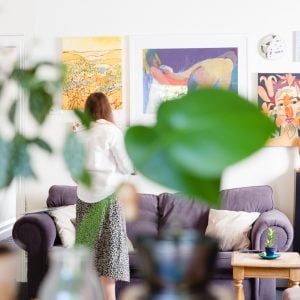What Is an Indigenous Art Centre and Why Are They so Important?
The conventional wisdom is Australia’s culture is young, at approximately two centuries old, with extensive borrowing from other countries and their traditions. It’s sometimes forgotten that, in fact, we are the home of the world’s oldest living culture and there are traditions, languages and cultural artefacts across the land that date back over 40,000 years. These are vital references to the identity, artistry and vision of Indigenous Australians today. The role of Indigenous art centres often goes unsung in the fair and just trade of art works. We spoke to Hayley Birchley, CEO of Injalak Arts, to learn about the inner workings of an art centre. In times of hardship and uncertainty, it is crucial now more than ever to support them.
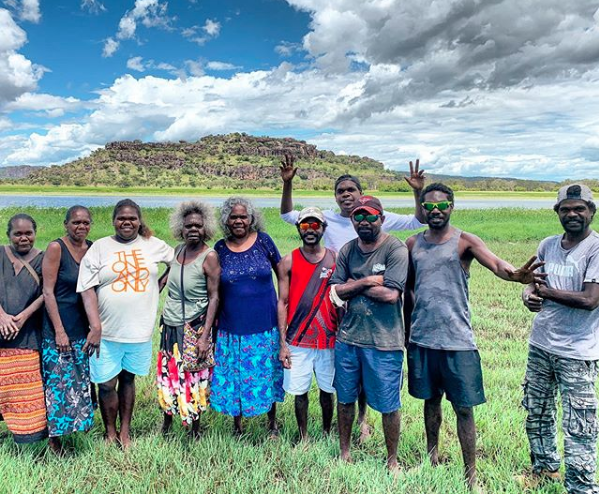
Injalak’s board of directors; Gwenyth Mangiru, Sylvia Badari, Gabriella Maralngurra, Christine Nabobbob, Donna Nadjamerrek, Owen Naborlhborlh, Isaac Girrabul, Shaun Namarnyilk, Maath Maralngurra and Craig Bangarr
What is an Indigenous Art Centre?
The mission of Indigenous art centres is based on the promotion of artistic endeavour and cultural practices of Aboriginal people. By supporting and preserving these practices, their work encourages the economic advancement of Indigenous communities. “Our art centre supports the aspirations of its members and artists to develop fine art careers, maintain country and cultural expression, and to provide independent income for artists and their families,” Hayley explains. “The guiding principle of Injalak Arts is ‘the sharing of culture’.”

“We recently asked artist Allan Namaniyuo on our Instagram ‘what does the art centre mean to you?’ and he said ‘the art centre is my future.'”
The Everyday of Indigenous Art Centres
As community-driven organisations, Indigenous art centres concern themselves with the Aboriginal circle that reside within a particular geographical area. “[Our] art centre is a place of welcome for any Kunwinjku person of West Arnhem Land to receive support to develop their fine art practice,” Hayley clarifies. “That includes the community of Gunbalanya as well as surrounding outstation homelands.”
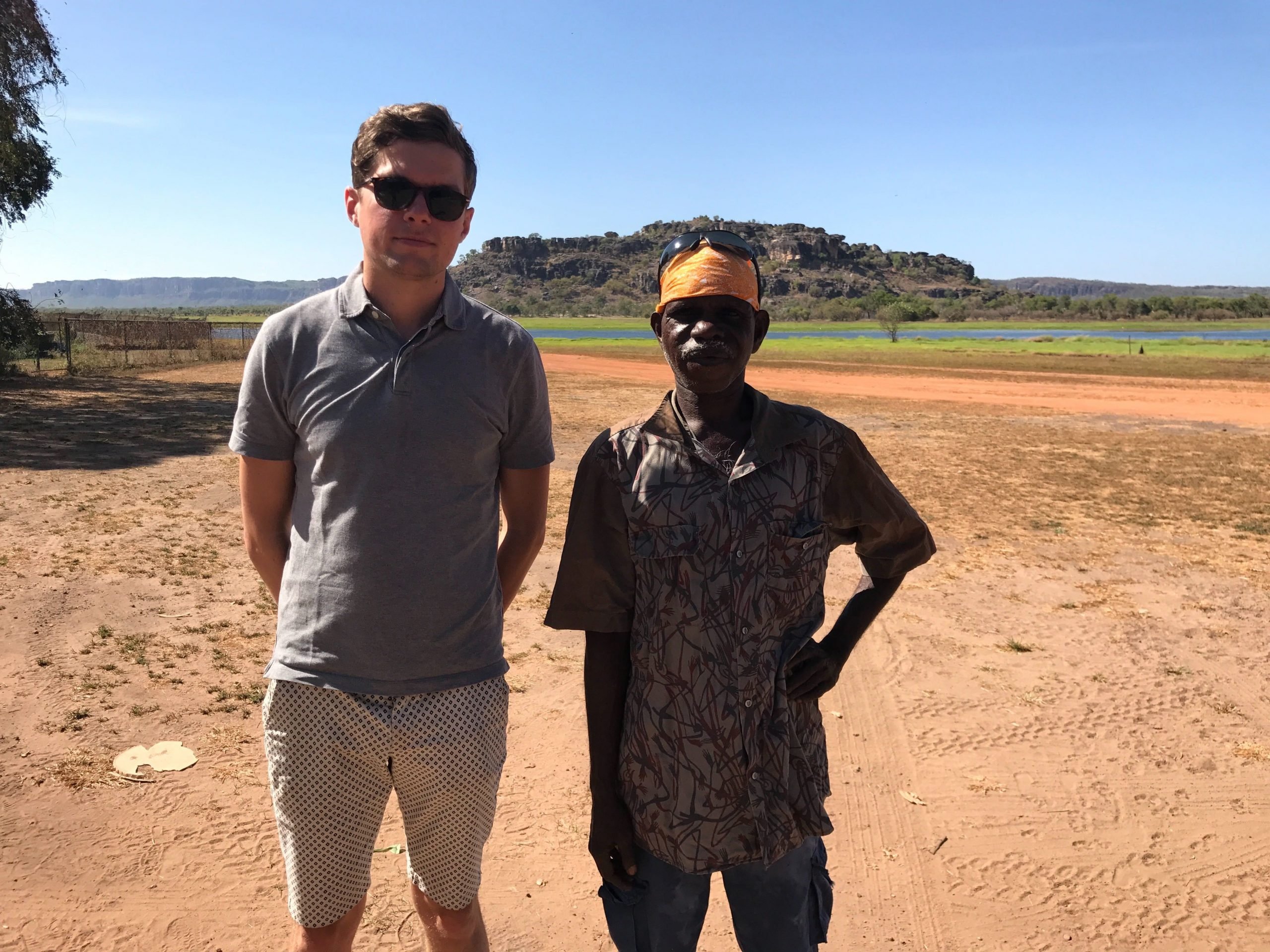
Our PR & comms manager Freddy Grant visited Injalak Arts in August 2017. Pictured here with Bluethumb artist Michael Naborlhborlh and behind is the renowned Injalak Hill!
Growing amounts of the population, from the city dweller to the country bumpkin, are turning towards sustainable and natural ways to create and produce. Within Indigenous communities, these practices have withstood thousands of years of change, and still employ the natural elements and colours of the earth as part of the creative process. Traditional materials at an Indigenous art centre like Injalak are commonly used – bark, ochre and pandanus for painting, weaving and carving, to name a few – but new media are welcomed as well. This includes textiles, film and photography, music and performance, sculpture and much more. One-on-one studio facilitation allows each artist full experimentation and expression with their chosen medium.
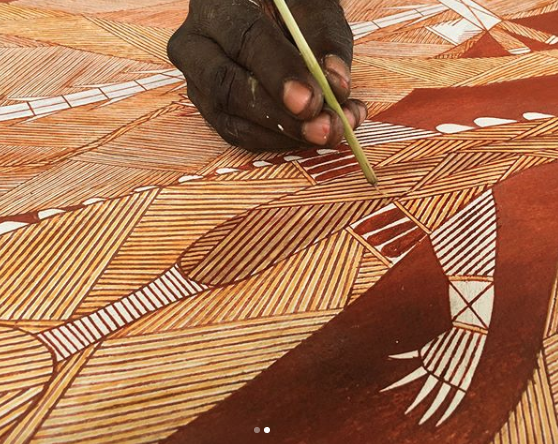
Roland Burranali working on the finest detail that brings this Billabong scene to life! Click here to see the finished piece…
“Injalak Arts welcomes over 10,000 tourists per year to visit the extraordinary rock art on Injalak Hill which dates back over 65,000 years and see the continuation of that tradition in the art centre,” Hayley adds. “Injalak Art artists exhibit around the world and are renowned for the West Arnhem Land ‘x-ray style’ painting which emulates the rock art tradition of their ancestors. We are also home to a large group of master weavers.”
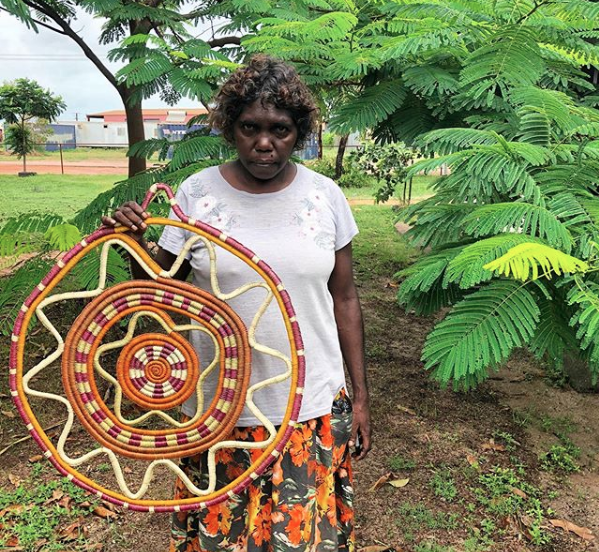
This awesome piece of fibre art by Karen Watson shows an incredible harvest of natural dyes and a skill nurtured by the arts centre.
“That’s the ‘art’ part of the story. But Indigenous art centres provide so much more. They are key community hubs which provide places of safety, respect, health and education. Not to mention the maintenance and support of cultural legacy. They are incredible places.”
The Process of Pricing and Buying Indigenous Art
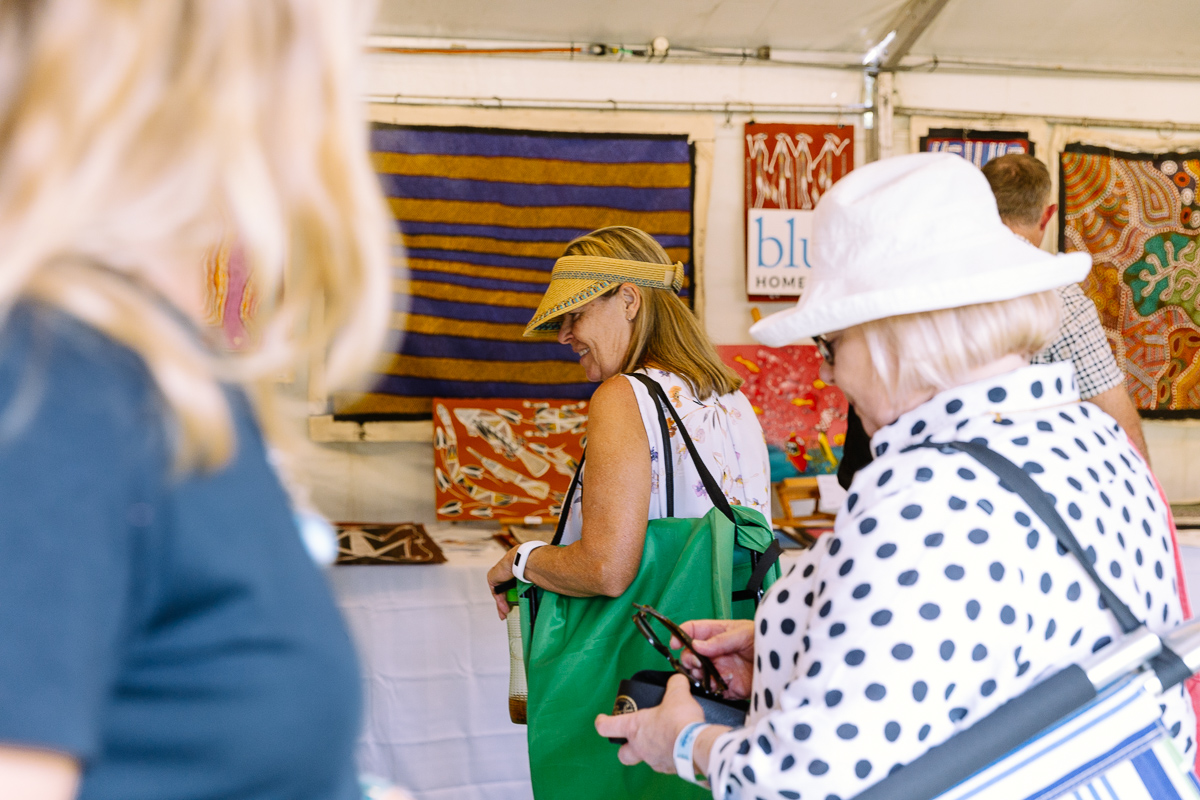
Various styles and media of Indigenous artworks were admired by all at our recent outing to WOMADelaide
The exact procedure may vary from one art centre to the next, but if we look at Injalak Arts as an example, Hayley and her colleagues take a managerial role for the artist. “The art centre takes a finished artwork on consignment from an artist; we find the best opportunity to exhibit and showcase that artwork and when the artwork sells, the artist is paid 50% directly and 50% is reinvested back into the art centre. That money is used by the art centre for buying art materials, supporting the artists to access country, collecting natural materials etc. so they can continue to produce fine art.” Art of all forms can be found at art fairs across Australia, as well as through art galleries such as Bluethumb, which sells Indigenous art at a lower commission rate.
“In many cases, art sales are the only source of earning income in remote communities,” Bluethumb co-owner George Hartley states. “But these communities have only been able to sell art to visitors who can make it to these remote places, through fine art galleries or at art fairs. We’re doing what we can to improve this. More than a quarter of Australia’s remote indigenous art centres list their artists with us.”
The Importance of Support
Organisations such as Injalak receive 10% of their total revenue from government funding. 90% is generated through the sale of artworks from the centre or other forms of support. “This means we are constantly striving to develop sustainable business to secure jobs and independent income for artists and their families into the future.”

Events like the National Aboriginal and Torres Strait Islander Art Awards (NATSIAA) showcase work from Indigenous art centres and artists to an international audience
The knowledge and endorsement of the work Indigenous art centres do is vital for their continuity and legacy. What would Hayley’s advice be to encourage and sustain these organisations? “Buy art because you love it and because it supports families. Art doesn’t have to be expensive; every little bit helps artists to buy groceries, power cards and essentials for their families. Ensure you are buying Indigenous art from an ethical source – a good way to do this is check if the seller is a member of the Indigenous Art Code, like Bluethumb. And if you are looking for something in particular and can’t see it, just ask! Our artists are always creating new work.”
What We Can Learn from Observing and Supporting Indigenous Culture
Indigenous art centres are one of a handful of resources that bridge the connection between the oldest cultures in the world and the lifestyle many modern-day Australians inhabit today. There’s no denying the challenge and uncertainty in these times. Knowing how to move forward is undetermined. Our sense of global society is becoming exhausted and fractured. We can, however, observe where we are right now, and take the opportunity to learn from an older, more connected way of life.
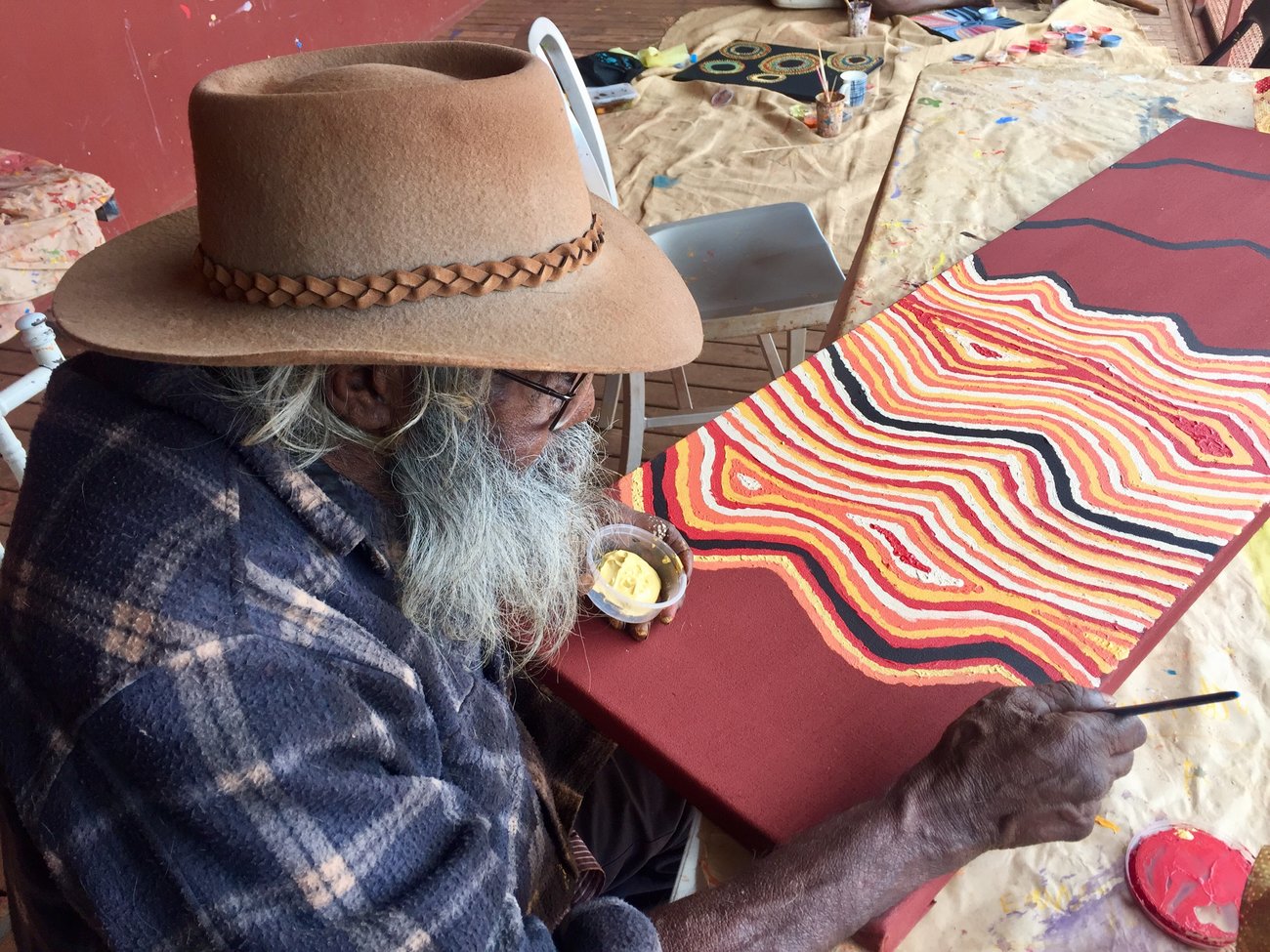
One of Warlayirti’s artists, Helicopter Tjungurrayi, working on a piece that recalls his connection to his land
For millennia, Aboriginal communities have shown a care for community, a connection to land, and a simplicity to life that seems almost unimaginable to the average person of the present day. In supporting those who empower the original stewards of the land, we ourselves can find a deeper relationship to the earth. We can re-learn the value of community, and remember when we came from.
Click here to shop ethical Indigenous art from Injalak Arts as well as other Aboriginal art centres on Bluethumb.

